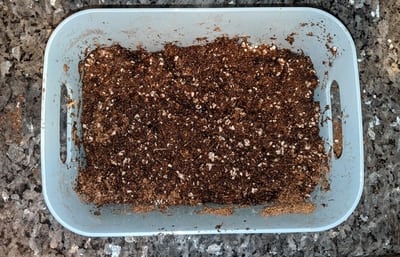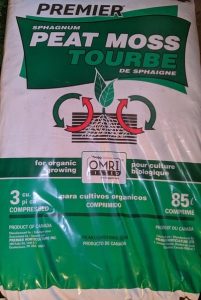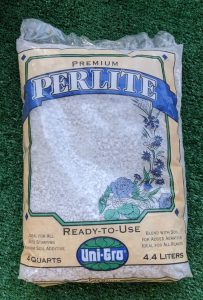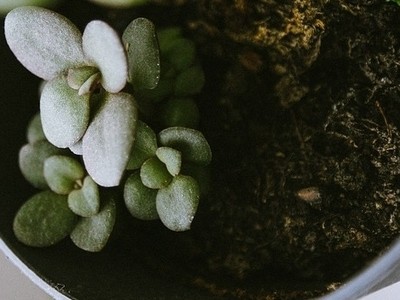I grow succulents and carnivorous plants in my home. When I was first started growing Venus flytraps, I researched the possibility of using succulent soil for my carnivorous plants. In this article, I share what I learned about Venus flytraps and succulent soil.
Succulent soil is not an appropriate potting media for Venus flytraps or other carnivorous plants. Succulent soil has nutrients and fertilizers that are harmful to Venus flytraps. Venus flytraps must grow in potting media without any minerals or nutrients.
In this article, you will learn about different potting media options for Venus flytraps. Also, I have highlighted some unsuitable potting media you should avoid.
Is Succulent Soil Safe for Venus Fly Trap?
Succulent soil varies in composition depending on the brand or the person making it. However, most succulent soil contains a substantial amount of standard potting soil and other components that contain nutrients.
The nutrients in succulent soil are beneficial for almost all plants, but Venus flytraps have very different requirements.
The high nutrient content in succulent soil makes it unsuitable for Venus flytraps. The nutrients in succulent soil can cause mineral burns, weaken and eventually kill Venus flytraps. Never employ succulent soil for Venus flytraps; instead, use nutrient-free soil.
Planting a Venus flytrap in the wrong soil will cause many issues. The nutrients present in succulent soil can produce mineral burns in Venus flytraps. Mineral burns are easy to spot, and they characterize by making the leaves turn yellow and droopy.
The minerals in succulent soil weaken Venus flytraps, as these plants are intolerant to any minerals in the ground.
Venus flytraps won’t die immediately if planted in succulent soil, but they will die eventually. The minerals slowly weaken the plant until it dies. The plant will look worst over time and eventually perish.
Luckily, there are many other soil options besides succulent soil. Keep on reading to learn which soil is the most appropriate for Venus flytraps.
Is Cactus Soil Suitable for Venus Flytrap?
Cactus soil is sometimes the same or similar to succulent soil. Cactus soil characterizes by having lots of nutrients and by exhibiting good drainage to prevent plants from rotting.
Cactus soil contains nutrients that are very harmful to Venus flytraps. Never plant Venus flytraps in cactus soil. Instead, employ a combination of pure moss and a drainage agent such as sand or perlite. Venus flytraps need to grow in potting media without any minerals or fertilizers.
Stay away from cactus soil to keep your Venus flytrap healthy. The section below expands on good soil options for carnivorous plants.
The Best Soil Options for Venus Flytraps
Venus flytraps weaken and die if they are planted in soil with high amounts of fertilizers and nutrients.
In the wild, Venus flytraps grow in inferior soil, with little to no access to nutrients. As a result, they have developed an intolerance to nutrients in the soil or the water they consume.
Venus flytraps must be planted in nutrient-free soil. Venus flytraps thrive in carnivorous plant soil. Carnivorous plant soil can be made with a combination of pure moss, such as long-fibered sphagnum moss or peat moss, with a drainage agent, such as sand or perlite.
Venus flytraps must grow in soil that lacks nutrients or fertilizers. Carnivorous plant soil is made up of pure potting ingredients that lack any additives. Carnivorous plant potting media is optimal for Venus flytraps.
Here are a few examples of carnivorous plant soil that are perfect for Venus flytraps:
- Pure peat moss
- Pure long-fibered sphagnum moss
- 4:1 or 2:1 ratio of peat moss and perlite
- 4:1 or 2:1 ratio of peat moss and silica sand
- 4:1 or 2:1 ratio of sphagnum moss and perlite
- 4:1 or 2:1 ratio of sphagnum moss and silica sand

You have the option to make or buy carnivorous plant soil for your plant. The sections below will guide you through the details.
Once you have carnivorous plant soil, it is time to plant your Venus flytrap. Make sure to read this article: Venus Flytrap Potting and Repotting Guide, before you start the process. Potting your plant correctly is critical to keep it healthy.
How to Make Carnivorous Plant Soil
Making carnivorous plant soil is not difficult. Usually, you only need one or two ingredients. However, getting those ingredients can be a challenge.
You have two main options when making carnivorous plant soil:
- Employing pure moss only
- Employing a combination of pure moss with a drainage agent
For pure moss, you can choose between peat moss or long-fibered sphagnum moss. Regardless of the type of moss you choose, it must be pure. It can not contain any nutrients or fertilizers. For example, you should not buy the standard miracle grow peat moss available in gardening stores. Miracle Grow is packed with nutrients harmful to Venus flytraps.
I use the brand in the picture below. It is cheap and suitable for Venus flytraps.

Employing pure moss only as a potting media for Venus flytraps is a good choice. However, adding a drainage agent in the soil provides extra benefits, such as aerations, drainage, and root rot prevention.
I recommend adding either silica sand or perlite to the moss to make optimal soil for your plants. The sand and perlite also need to be pure and lack nutrients. This article can help you select suitable sand for your Venus flytrap. Make sure to ask before you buy and confirm the ingredients do not have any fertilizers.
I use perlite for my carnivorous plant soil mixes:

Once you have the ingredients to make carnivorous plant soil, the mixing process is easy. The only thing you need to do is to combine the moss with the perlite or sand. You can employ as much as a 50-50 ratio for optimal drainage. However, a 20% perlite/sand concentration is enough to provide good drainage and aeration.
Where to But Carnivorous Plant Soil
There are many places where you can buy carnivorous plant soil.
Online stores: Buying online is a practical option. Consider buying soil for your Venus flytrap online. Amazon and Etsy sell carnivorous plant soil.
Gardening stores: It is unlikely that gardening stores would carry carnivorous plant soil, but you can always ask. Make sure you verify the ground does not contain additives before buying.
Online or local nurseries: Nurseries might surprise you. Some of them carry carnivorous plants and their related supplies. Call your local nursery and ask for carnivorous plant soil. Also, some carnivorous plant nurseries have a significant online presence. Make a quick google search, and you will find many that can ship soil to your home.
Can Venus Flytraps and Succulents Grow Together?
Venus flytraps and succulents share many similarities. They both thrive in bright environments, and they both like soil with good drainage.
Venus flytraps and succulents should not together in the same container. Each requires different soil and humidity levels. Venus flytraps must remain in a humid environment at all times, while succulents prefer dry media.
Growing succulents and Venus flytraps can be very rewarding. But, if you plan on growing both, you must never forget how different they are. Venus flytraps thrive in humid environments, while succulents prefer dry climates.
Succulents and Venus flytraps can be grown in the same environment as long as each has its pot and soil. A bright location is beneficial to both plants. Venus flytraps can adapt to arid climates as long as they are watered often.
Many plants can grow close to carnivorous plants, but very few can grow in the same pot, as the soil composition and watering level are unique.
More Information
The soil type you employ is extremely important for Venus flytraps, but there are many other factors you should keep in mind to keep your plant alive and healthy.
Do not waste time browsing through the web to find Venus flytrap care information. This guide contains all you need to know to grow Venus flytraps: Ultimate Venus Flytrap Care Guide. Also, it includes a free care sheet you can download.


